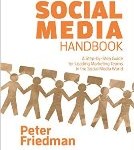At this year’s CES conference, MC10’s two showcased products were nothing short of groundbreaking. By debuting two different wearables, one aimed to satisfy the medical community while the other targeting the general consumer, the company succeeded in sparking interest. The first product, known as BioStamp Research Connect, is designed to assist researchers with a multitude of health-related deficiencies. Inside the band-aid sized wearable contains both a gyroscope and an accelerometer, which are aimed towards tracking electrical activity, motor skills, and movement. To top it off, this miniature device can perform a real-time ECG. Moving on to their consumer oriented product, MC10 has partnered with L’Oréal to create My UV Patch. Designed to monitor sun exposure, this stretchy sticker syncs with smartphones to review results, and even includes helpful tips about healthy tanning.
Only time will tell how these two new innovations will fair in the 2016 market. To learn more, click here to read about it in Tech Times by Horia Ungureanu.
 Pharmaceutical marketing is changing. With increased industry spend, new marketing channels, a more informed consumer, and a shifting healthcare landscape, it is clear that marketers need to be smarter than ever with their investment decisions. It is also clear that DTC marketing is no longer just about pumping money into national TV ad buys (though they continue to receive substantial investment). It’s now also about targeted messaging. It’s about digital. It’s about patient engagement. In this environment, it is more complex than ever to understand how to get the right message in front of the right consumer at the right time. Marketers will need to innovate.
Pharmaceutical marketing is changing. With increased industry spend, new marketing channels, a more informed consumer, and a shifting healthcare landscape, it is clear that marketers need to be smarter than ever with their investment decisions. It is also clear that DTC marketing is no longer just about pumping money into national TV ad buys (though they continue to receive substantial investment). It’s now also about targeted messaging. It’s about digital. It’s about patient engagement. In this environment, it is more complex than ever to understand how to get the right message in front of the right consumer at the right time. Marketers will need to innovate. It’s taken a while, but the pharmaceutical industry has slowly realized the value of social media to reach caregivers, health care professionals, and patients to raise awareness and even track adverse events. According to the IMS Institute for Healthcare Informatics, only half of the 50 largest pharmaceutical companies worldwide use social media, and only 10 are on the Big Three: Facebook, Twitter, and YouTube.
It’s taken a while, but the pharmaceutical industry has slowly realized the value of social media to reach caregivers, health care professionals, and patients to raise awareness and even track adverse events. According to the IMS Institute for Healthcare Informatics, only half of the 50 largest pharmaceutical companies worldwide use social media, and only 10 are on the Big Three: Facebook, Twitter, and YouTube. The experience of encountering advertising tailored to one’s behaviors or interests on the internet has become ubiquitous in a very short time. We’ve all had that experience – shopping for a particular shoe on Zappos or gadget on Amazon, not buying it, then having an ad for that shoe or that gadget magically appear in a whole variety of other websites during the course of our browsing over a period of days or even weeks. Or, perhaps, buying that shoe or gadget, and then encountering ads for similar shoes or gadgets, or shoe/gadget accessories.
The experience of encountering advertising tailored to one’s behaviors or interests on the internet has become ubiquitous in a very short time. We’ve all had that experience – shopping for a particular shoe on Zappos or gadget on Amazon, not buying it, then having an ad for that shoe or that gadget magically appear in a whole variety of other websites during the course of our browsing over a period of days or even weeks. Or, perhaps, buying that shoe or gadget, and then encountering ads for similar shoes or gadgets, or shoe/gadget accessories. As Executive Vice President, Angela Tenuta leads client services for
As Executive Vice President, Angela Tenuta leads client services for  Shannon Gallagher serves as Vice President, Analytics Services at Crossix Solutions, where she leads the ongoing expansion of Crossix services and capabilities at the intersection of pharmaceutical and consumer healthcare. A veteran consultant in market research and data analytics for the pharmaceutical, healthcare and CPG sectors, Shannon is passionate about Crossix’s unique position to harness Big Data to empower better communication to the patient as a consumer. Prior to joining Crossix, Shannon spent 10 years working at Nielsen in Innovation Analytics, consulting on new product development for Rx and OTC/CPG manufacturers. Connect with her on
Shannon Gallagher serves as Vice President, Analytics Services at Crossix Solutions, where she leads the ongoing expansion of Crossix services and capabilities at the intersection of pharmaceutical and consumer healthcare. A veteran consultant in market research and data analytics for the pharmaceutical, healthcare and CPG sectors, Shannon is passionate about Crossix’s unique position to harness Big Data to empower better communication to the patient as a consumer. Prior to joining Crossix, Shannon spent 10 years working at Nielsen in Innovation Analytics, consulting on new product development for Rx and OTC/CPG manufacturers. Connect with her on